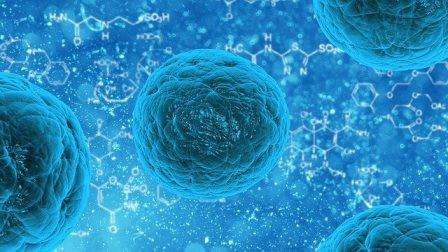Q- Expand the term AIDS and HIV class 9
Answer- AIDS is a term that refers to acquired immune deficiency syndrome. It is a kind of STDs (Sexually transmitting disease). On the other hand, the term HIV refers to the Human Immunodeficiency virus. HIV is the virus that causes AIDS disease.
The above answer is based on expand the term AIDS and HIV class 9. So, we hope that after reading our answer you understood the answer of- expand the term AIDS and HIV class 9. In case you do not understand it clearly so don’t worry about it. We are here to help you out.
Firstly, we would like to remind you that as usual we have provided you with some other important questions of the class 9th science exams and after these questions, we have provided you with some brief descriptions about the HIV virus and AIDS disease which might be very helpful for you. We are damn sure that after reading this article completely you can easily answer the above question which is about- Expand the term AIDS and HIV class 9.
- Which pathogen causes kala azar in man
- Name the vector of Japanese encephalitis and malaria
- Name two types of Immune cells of body
Now before finishing this post we would like to tell you about the HIV virus and AIDS disease. Along with it, we will also cover some other topics that are co-related to HIV virus and AIDS disease. If you have doubt in ‘expand the term AIDS and HIV class 9’ so you should read the content given below.
HIV Virus
The HIV virus or human immunodeficiency virus is two species of Lentivirus which is a subgroup of retrovirus that infect humans adversely. Over time, the human immunodeficiency virus causes a disease which is called acquired immunodeficiency syndrome or AIDS. It is a condition in which the progressive failure of the immune system allows life-threatening opportunistic infections and cancers to thrive. Without any kind of treatment, the average survival time after infection with the HIV virus is estimated to be 9-11 years, depending on the HIV subtype.
HIV is a member of the genus Lentivirus and is also part of the family Retroviridae. The Lentiviruses have many biological as well as morphologies similar properties. Many species are infected by lentiviruses, which are characteristically responsible for long-term illnesses with a long incubation period.
The Lentiviruses are transmitted as positive-sense, single-stranded, enveloped RNA viruses. Upon entry into the targeted cell, the viral RNA genome is converted into double-stranded DNA through a virally encoded enzyme, that reverses transcriptase, which helps in the transportation along with the viral genome in the virus particle.
The resulting DNA of that virus is then imported into the nucleus of that cell and then it is integrated into the cellular DNA by a virally encoded enzyme, integrase as well as some other host co-factors.
Many kinds of research have shown that for both same-sex and opposite-sex couples the HIV virus is untransmittable through condomless sexual intercourse if the HIV-positive partner has a consistently undetectable viral load. HIV virus or human immunodeficiency virus infects vital cells in the human immune system, such as helper-T cells (specifically CD4+ T cells), macrophages as well as dendritic cells.
HIV Infection
The HIV infection leads to a decrease in the levels of CD4+ T cells through a number of mechanisms, including pyroptosis of abortively infected-T cells, the direct viral killing of infected cells, apoptosis of uninfected bystander cells, and killing of infected CD4+ T cells by CD8+ cytotoxic lymphocytes that recognize infected cells. When CD4+ T cell numbers fall below a critical level, then the cell-mediated immunity is lost in that person and the body becomes progressively more susceptible to opportunistic infections, which leads to the development of AIDS disease.

Stages of HIV
There are two main stages of the HIV virus:
(a) HIV-1
HIV-1 is the virus that was initially discovered and termed both human T-lymphotropic virus 3 (HTLV-III) and lymphadenopathy-associated virus (LAV).
HIV-1 is more virulent and more infective as compared to HIV-2. This stage of the HIV virus is the main virus that causes the majority of HIV infections globally.
(b) HIV-2
The HIV-2 virus is less effective and infectious as compared to HIV-1. Due to its relatively poor capacity for transmission, HIV-2 is largely confined to West Africa.
AIDS
AIDS or Acquired immunodeficiency syndrome is defined as an HIV infection with either a CD4+ T cell count below 200 cells/µL or the occurrence of specific diseases associated with HIV infection in the human body.
Because of the absence of specific treatment, approximately half of people infected with the HIV virus develop AIDS diseases in their bodies within ten years. The most common initial conditions that alert to the presence of AIDS are forty percent of pneumocystis pneumonia (40%), about twenty percent of cachexia in the form of HIV wasting syndrome, and esophageal candidiasis. Other common signs include recurrent respiratory tract infections in an infected person.
Transmission of AIDS
In maximum cases, AIDS disease is caused due to sexual contact with an infected person. As the HIV virus is a sexually transmitting virus that causes an infection (AIDS). there are some other causes of transmission of AIDS disease from an infected person to a healthy person. These are:
- Contact with or transfer of blood
- pre-ejaculate, semen, and vaginal fluids.
Expand the term AIDS and HIV class 9
In the above answer, we expand the term AIDS and HIV class 9. As it is a question in class 9th biology so we are writing here class 9th after the question. So, if you got the answer of ‘expand the term AIDS and HIV class 9’. Then follow our blog and do not forget to tell your questions to us through comments.
